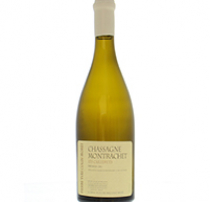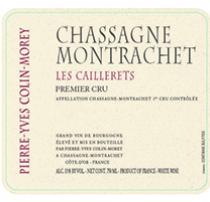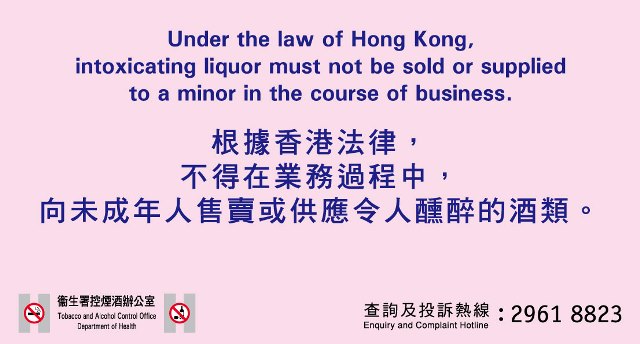| Region | Burgundy |
| Appellation | Cote de Beaune |
| Category | White Wine |
| Classification | Premier Cru (Burgundy 1935) |

|

|
| Cat | Region | Year | Producer, Wine | Size | C(s) | Bt(s) | HKD/Cs | HKD/Bt | Score | Critic | |
| Burgundy | 2018 | Domaine Pierre-Yves Colin-Morey, Chassagne Montrachet 1er Cru les Caillerets | BT | - | 4 | - | HK$3,500 | 93+ | WK | ||
| Burgundy | 2018 | Domaine Pierre-Yves Colin-Morey, Chassagne Montrachet 1er Cru les Caillerets | BT6 | - | - | HK$19,950 | - | 93+ | WK | ||
| All wines are subject to remaining unsold. We offer free delivery for purchase exceeding a certain amount. Please check Delivery Rates for details. | |||||||||||
An airy and elegant nose reflects notes of cool white flowers, spiced tea and apple compote that is trimmed in a hint of citrus confit. The racy, refined and beautifully detailed medium weight flavors brim with minerality on the balanced and sneaky long finish. This is a really pretty wine with excellent material stretched over a firm acid spine that should enable this to age gracefully over a decade plus.
Score: 91-94 Allen Meadow (AM), Bourghound (BH), June 2020
The 2018 Chassagne-Montrachet 1er Cru Les Caillerets is lovely, opening in the glass with aromas of mandarin oil, lime, Anjou pear, fresh mint and toasted almonds. Medium to full-bodied, layered and muscular, it´s concentrated and racy, with lively acids and chalky structuring extract, concluding with a saline finish.
Clashing diaries, unanticipated accidents and then a global pandemic had conspired to frustrate my attempts to taste with Pierre-Yves Colin for over a year, but my perseverance was ultimately rewarded with the chance to sample his bottled 2018s and still maturing 2019s this fall. We discussed a number of topics. Most obviously, we talked of the 2019 vintage, where Pierre-Yves remarked on the importance of catching the right harvest date and how he has blocked the malolactic fermentation of one or two barrels per cuvée not so much as to retain freshness as to preclude any excess aromatic exoticism (he did the same in the very different 2008 and 2013 vintages with much success). We also surveyed winemaking practices: since moving to his new, much colder cellars in Chassagne-Montrachet, he finds his wines retain significantly more free sulfur dioxide for any given addition, and he now feels he added more than was necessary—given these altered conditions—to his 2015s, 2016s, and 2017s. So, some subtle adjustments have now been made in this regard, and readers can expect the wines to be a little less buttoned up out of the gates than has been the case in those three vintages. Now Pierre-Yves has so much space, he´s also thinking about further extending the élevage of his lower appellations: in the next two or three years, he´s contemplating fermenting and maturing them in 350-liter barrels for a year, before racking them to tronconic wooden vats for further time on the lees. We also talked of this history of the Pierre-Yves Colin-Morey label, and that bears reiterating here to help readers better understand these wines. In its inception, this was a négociant label, with Pierre-Yves depositing empty (new) barrels with his suppliers and collecting them when they had been filled: in 2001, he debuted with six barrels; in 2002, 12, and by 2005, the last year of exclusively négociant production, fully 28 barrels. Since then, Pierre-Yves has gradually augmented his domaine holdings, beginning with his 13-hectare share of Domaine Marc Colin and supplemented by seven hectares inherited by his wife, Caroline Morey. Concomitantly, his purchases as a négociant have diminished; and when he does buy, he prefers (quite naturally) to buy in fruit than in must. Some of the parcels whose grapes he purchases, he farms, as is the case with his Bâtard-Montrachet, Corton-Charlemagne and some of his communal Meursault cuvée. And sometimes, even if he doesn´t farm the parcel, it´s his team that picks at harvest time: this is the case for his Meursault Perrières. Purchased grapes, it´s worth noting, are never vinified together with domaine fruit, so every cuvée consists of either one or the other. In resumé, then, this is the story of a négociant label that has become more and more of a domaine—and not remotely the reverse, a claim I recently overheard (and contradicted).
Score: 93+ William Kelley (WK), The Wine Advocate (WA), January 2021









